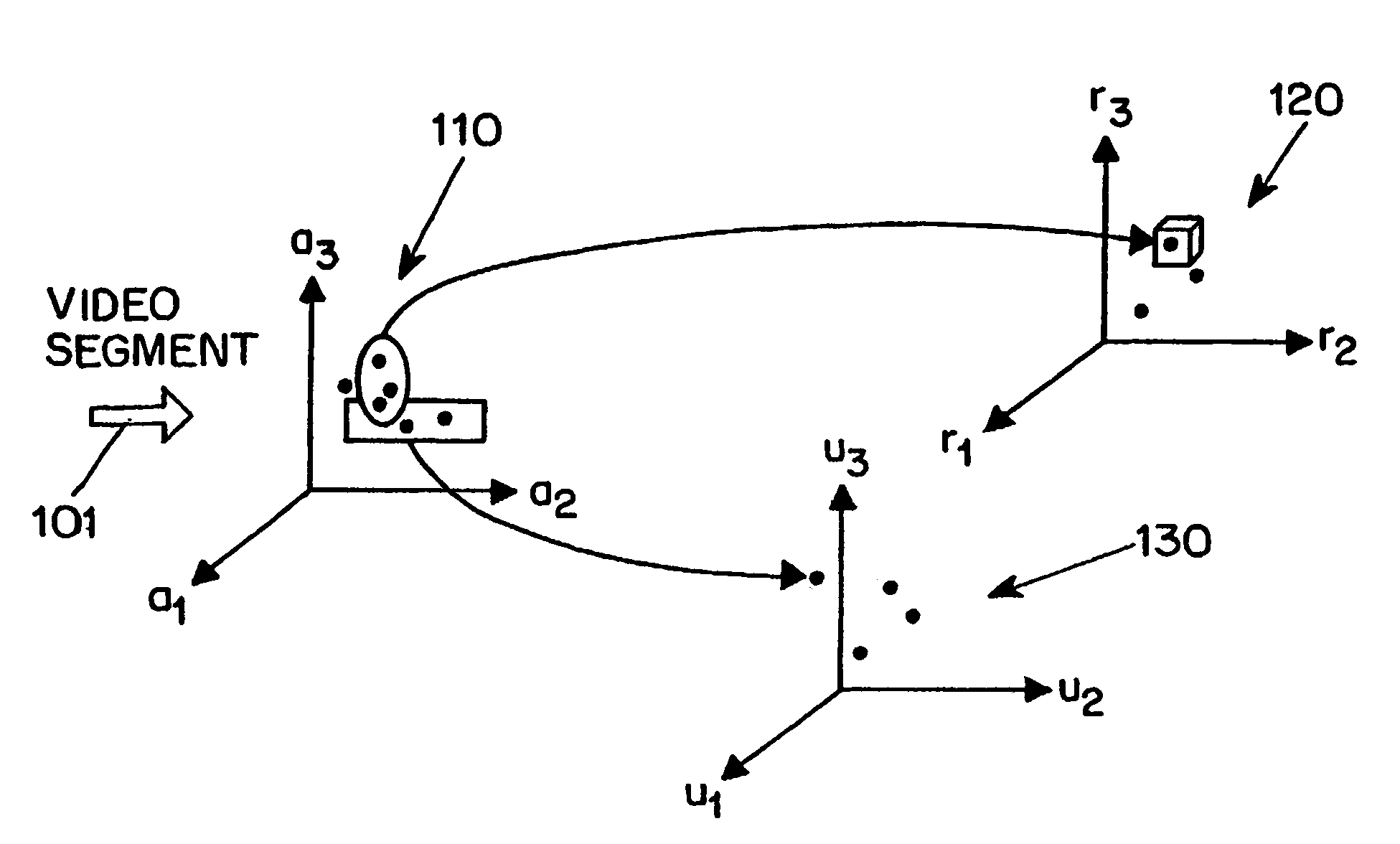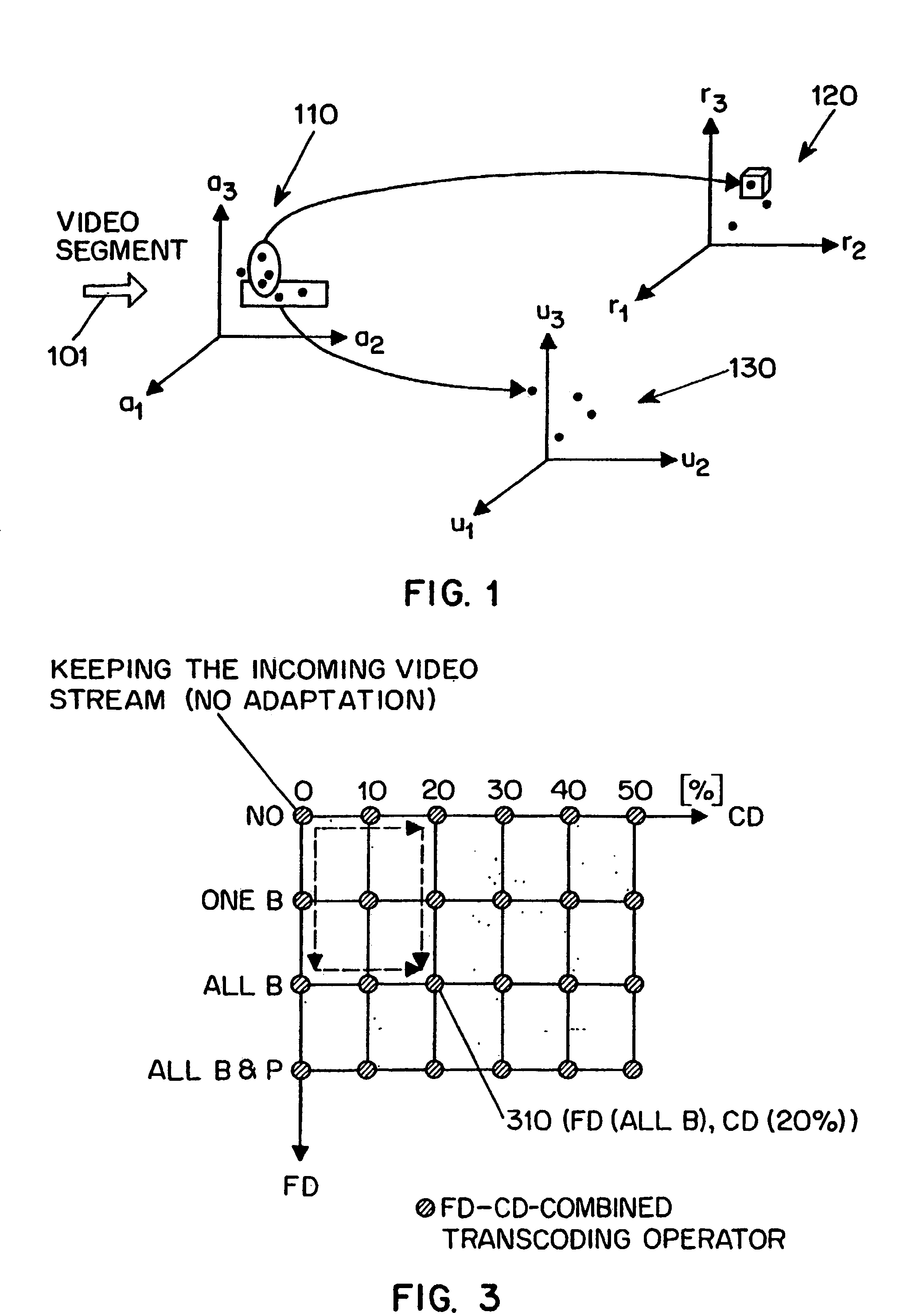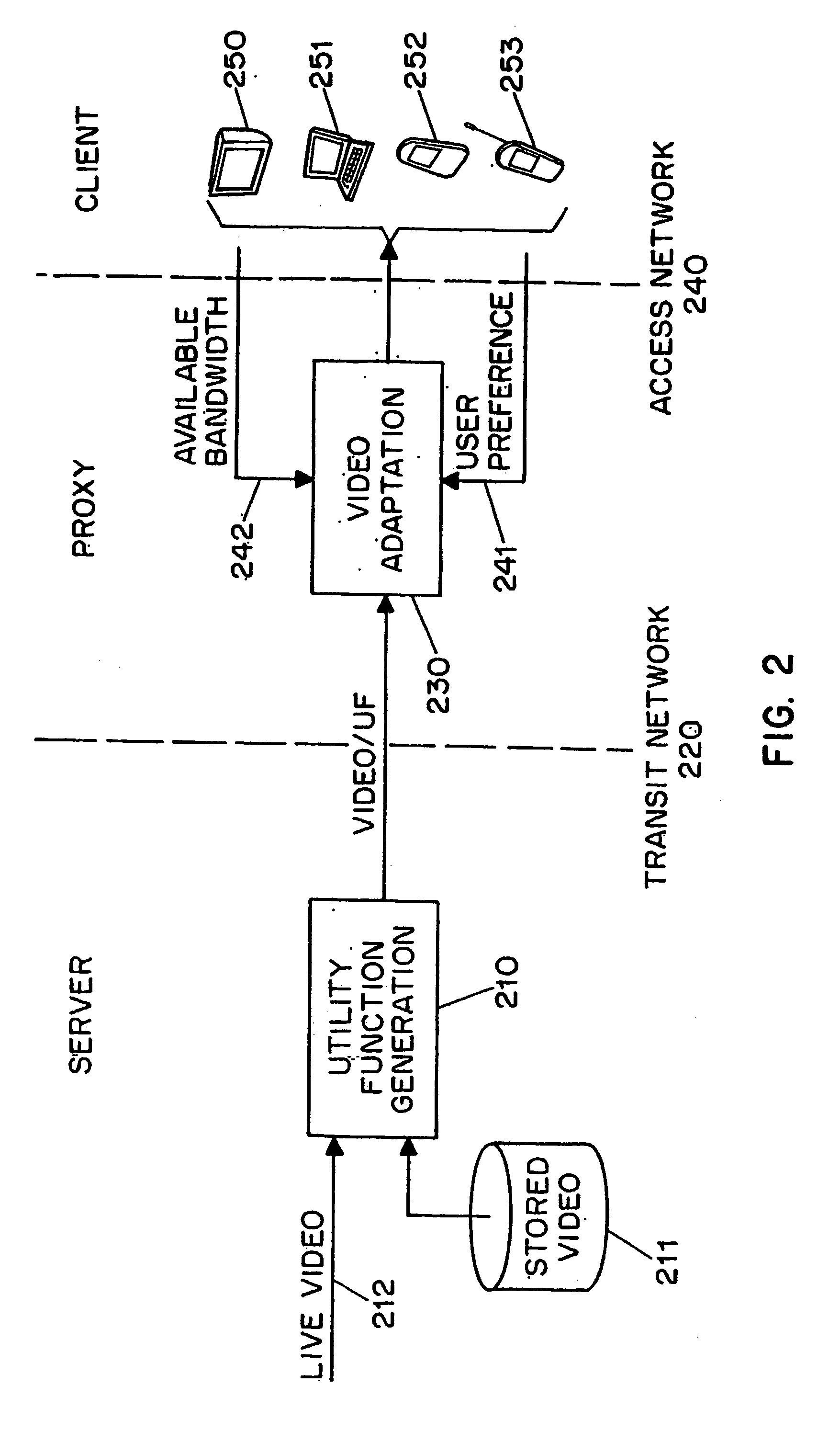Method and system for optimal video transcoding based on utility function descriptors
a video transcoding and utility function technology, applied in the field of multimedia content delivery across the network, can solve the problems of no standard way to control the access, delivery, management and protection of such content, and the mpeg-7 transcoding hints do not provide information about feasible transcoding operators and their expected performance, and do not provide a solution
- Summary
- Abstract
- Description
- Claims
- Application Information
AI Technical Summary
Benefits of technology
Problems solved by technology
Method used
Image
Examples
Embodiment Construction
[0024]Referring to FIG. 1, an exemplary embodiment of the present invention will be described. A utility-based framework provides a systematic way of efficient video adaptation by modeling the relationships among essential parameters: adaptation operations, resources, and utility. In general, adaptation operations can take the form of spatial domain adaptation, temporal adaptation, or object-based adaptation. Spatial domain adaptation may include spatial resolution reduction and quality or signal-to-noise adaptation, such as requantization or DCT coefficient dropping. Temporal domain adaptation may include frame dropping, and object-based adaptation may include video object prioritization and / or dropping. A particular operation defined by any of such adaptation methods is referred to herein as an adaptation operation.
[0025]Resources include available support from terminal devices and network capabilities like bandwidth, computation capability, power, and display size, etc. Utility i...
PUM
 Login to View More
Login to View More Abstract
Description
Claims
Application Information
 Login to View More
Login to View More - R&D
- Intellectual Property
- Life Sciences
- Materials
- Tech Scout
- Unparalleled Data Quality
- Higher Quality Content
- 60% Fewer Hallucinations
Browse by: Latest US Patents, China's latest patents, Technical Efficacy Thesaurus, Application Domain, Technology Topic, Popular Technical Reports.
© 2025 PatSnap. All rights reserved.Legal|Privacy policy|Modern Slavery Act Transparency Statement|Sitemap|About US| Contact US: help@patsnap.com



